Mastering the 2000 most common Japanese Kanji is essential for proficiency in Japanese‚ as they represent the core characters used in daily communication and writing.
Overview of the Importance of Kanji in Japanese
Kanji is fundamental to the Japanese language‚ representing words or ideas in written form. Alongside Hiragana and Katakana‚ Kanji forms the core of Japanese writing. Each character carries meaning‚ enabling efficient communication. Kanji is essential for reading comprehension‚ especially in formal texts‚ media‚ and literature. Without Kanji‚ understanding Japanese becomes severely limited. It is also used in names‚ common phrases‚ and cultural expressions‚ making it indispensable for effective communication. Mastery of Kanji unlocks the ability to engage fully with Japanese culture‚ history‚ and daily life.
Why Focus on the 2000 Most Common Kanji?
Focusing on the 2000 most common Japanese Kanji is a practical approach to mastering the language‚ as these characters appear frequently in daily communication. They are essential for reading newspapers‚ signs‚ and literature‚ making them a cornerstone of Japanese literacy. By prioritizing these Kanji‚ learners can build a solid foundation‚ enabling them to understand and use Japanese effectively. This targeted approach ensures efficiency‚ as it concentrates on the most relevant characters‚ rather than overwhelming learners with thousands of less commonly used Kanji. This strategy aligns with the content of the “2000 Most Common Japanese Kanji PDF‚” providing a clear and structured path to proficiency.
Brief Explanation of the “2000 Most Common Japanese Kanji PDF”
The “2000 Most Common Japanese Kanji PDF” is a comprehensive guide listing and explaining the 2000 most frequently used Kanji in Japanese. Designed for learners‚ it provides meanings‚ readings (On-yomi and Kun-yomi)‚ stroke order‚ and example sentences. Organized by frequency or category‚ it helps prioritize study. This resource is invaluable for improving reading‚ writing‚ and vocabulary skills. Ideal for all proficiency levels‚ it supports both classroom learning and self-study‚ making it a must-have tool for mastering essential Kanji efficiently.
The Significance of Learning the 2000 Most Common Kanji
Learning these Kanji enhances reading and writing skills‚ providing a foundational understanding of Japanese media‚ literature‚ and daily communication‚ crucial for advancing language proficiency and cultural engagement.
Frequency of Use in Everyday Japanese
The 2000 most common Japanese Kanji appear frequently in daily life‚ making them indispensable for effective communication. These characters are found in newspapers‚ signs‚ and casual conversations‚ ensuring their high utility; Learning them enables recognition of 80% of Kanji in media‚ making reading and writing more accessible. Their prevalence in modern Japanese ensures that mastering these Kanji significantly enhances language proficiency and practical application in real-world scenarios.
Building a Strong Foundation for Fluency
Mastering the 2000 most common Japanese Kanji provides a solid foundation for achieving fluency in Japanese. These characters are fundamental to reading‚ writing‚ and understanding the language effectively. By focusing on high-frequency Kanji‚ learners can build a strong base that enables them to recognize and comprehend a significant portion of written Japanese. This foundation is crucial for advancing vocabulary acquisition‚ improving reading speed‚ and enhancing overall communication skills. A strong Kanji knowledge base also facilitates the learning of more complex characters and expressions‚ making it easier to progress in Japanese studies and engage with various forms of Japanese media and literature.
Cultural and Historical Insights Through Kanji
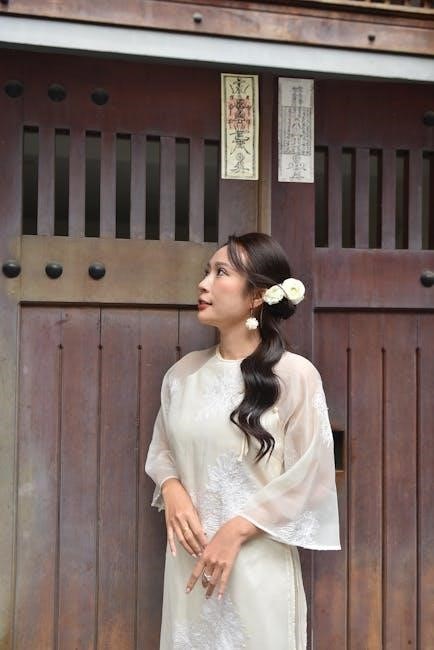
Learning the 2000 most common Japanese Kanji offers a gateway to understanding Japan’s rich cultural and historical heritage. Many Kanji carry stories rooted in their origins‚ reflecting ancient beliefs‚ traditions‚ and values. For instance‚ characters like (mountain) and (river) symbolize nature’s significance in Japanese culture. Historical evolution‚ such as simplified forms of Kanji‚ reveals how meanings and usage have adapted over centuries. Studying these characters provides insight into Japan’s past‚ its connection to China‚ and the unique cultural identity shaped by these symbols. This deeper understanding enriches not only language skills but also appreciation for Japanese traditions and history.
How to Study the 2000 Most Common Japanese Kanji
Studying the 2000 most common Japanese Kanji requires a systematic approach‚ combining mnemonics‚ regular practice‚ and the use of resources like the 2000 Most Common Japanese Kanji PDF for effective learning.
Effective Methods for Kanji Memorization
Effective Kanji memorization involves consistent practice and strategic techniques. Flashcards with meanings and examples are a popular tool. Mnemonics‚ such as associating shapes with stories‚ enhance retention. Grouping similar Kanji reduces confusion. Writing practice reinforces memory‚ while spaced repetition systems optimize long-term retention. Using digital apps or physical workbooks can also streamline the process. Combining visual‚ auditory‚ and kinesthetic learning methods engages multiple senses‚ improving recall. Lastly‚ incorporating Kanji into sentences or stories provides context‚ making them easier to remember. These methods‚ when applied diligently‚ significantly improve Kanji mastery.
The Role of Mnemonics in Kanji Learning
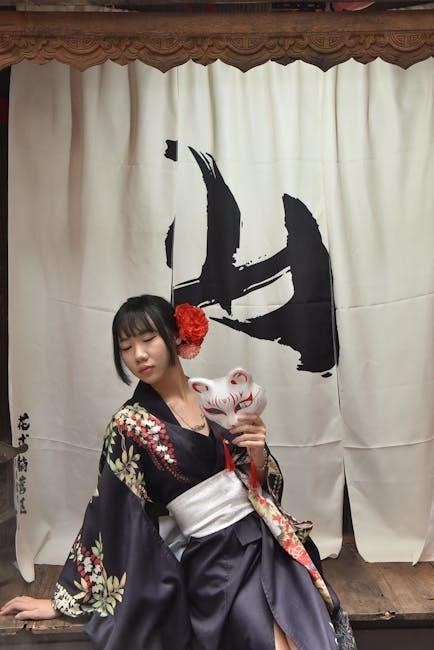
Mnemonics are powerful tools that help learners associate Kanji with memorable images‚ stories‚ or patterns‚ making them easier to retain. By creating vivid mental connections‚ mnemonics simplify the complexity of Kanji shapes and meanings. For example‚ associating a character’s components with a personal story or visual cue enhances recall. Mnemonics also reduce the cognitive load of learning thousands of characters‚ allowing learners to focus on understanding rather than mere memorization. Over time‚ these associations become automatic‚ speeding up recognition and writing processes. Mnemonics are particularly effective for beginners‚ as they provide a structured approach to mastering the 2000 most common Kanji.
Practice Techniques for Long-Term Retention
Consistent practice is key to retaining Kanji. Techniques like spaced repetition‚ active recall‚ and writing exercises help reinforce memory. Use flashcards to review characters regularly‚ focusing on stroke order and meaning. Incorporate Kanji into sentences to improve context understanding. Practice writing Kanji by hand to strengthen muscle memory‚ and utilize digital tools for tracking progress. Regular review sessions‚ even for a few minutes daily‚ significantly improve retention. Combine these methods with real-life applications‚ such as reading Japanese texts or watching media with subtitles‚ to solidify learning and ensure long-term retention of the 2000 most common Kanji;
Resources for Learning the 2000 Most Common Kanji
Utilize comprehensive PDF guides‚ interactive apps‚ and structured textbooks to efficiently study the 2000 most common Kanji‚ ensuring a well-organized and effective learning experience for all levels.
Recommended PDFs for Download
Several high-quality PDF resources are available for studying the 2000 most common Japanese Kanji. Popular options include Kodansha Kanji Learner’s Course and Tae Kim’s Guide to Kanji. These PDFs provide detailed stroke order‚ meanings‚ and example sentences. Many resources also include mnemonics and practice exercises to aid memorization. Websites like WaniKani and JapanesePod101 offer free or paid downloadable PDFs tailored for beginners and advanced learners. Ensure to download from reputable sources to access accurate and comprehensive materials. These PDFs are invaluable for systematic study and long-term retention of Kanji.
Apps and Digital Tools for Kanji Study
Utilizing apps and digital tools can significantly enhance your kanji learning experience. Popular apps like Anki and WaniKani offer flashcard systems and spaced repetition for effective memorization. Skritter focuses on writing practice‚ while Tofugu and Kanji Study provide interactive lessons and games. These tools often include features like stroke order guides‚ example sentences‚ and customizable study plans. Digital flashcards and progress tracking help maintain consistency‚ making kanji study more accessible and engaging. By leveraging these resources‚ learners can efficiently master the 2000 most common kanji and improve their overall Japanese proficiency.
Textbooks and Online Courses
Textbooks and online courses provide structured learning paths for mastering the 2000 most common Japanese Kanji. Popular textbooks like Genki and Minna no Nihongo include detailed Kanji lessons. Online platforms such as Coursera‚ Udemy‚ and Japanesepod101 offer courses tailored to Kanji study. These resources often include interactive exercises‚ quizzes‚ and stroke-order guides. They complement PDF materials by offering a comprehensive curriculum and tracking progress. Many courses also focus on applying Kanji in context‚ enhancing both recognition and usage skills. Leveraging these tools ensures a well-rounded approach to Kanji learning‚ making the process engaging and effective for learners of all levels.
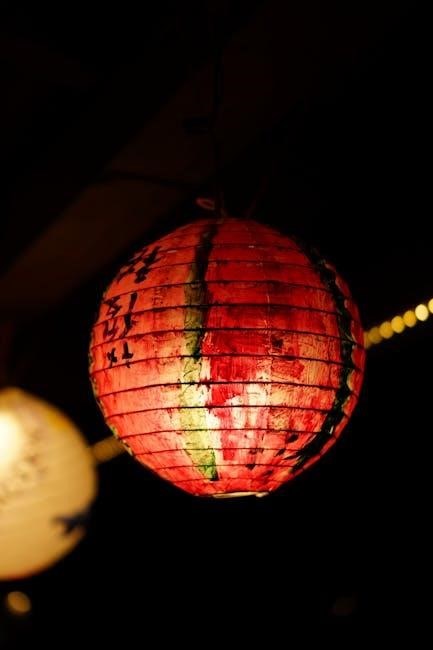
Understanding the Structure of Kanji
Kanji characters are composed of radicals‚ stroke orders‚ and common components‚ which provide clues to their meanings and pronunciation‚ aiding in recognition and memorization.
Radicals and Their Meanings
Radicals are the building blocks of Kanji‚ serving as components that provide clues to a character’s meaning or pronunciation. There are 214 standard radicals‚ each with specific roles. Many radicals represent common elements like water ‚ tree ‚ or person ‚ while others are more abstract. Understanding radicals is crucial for deciphering unfamiliar Kanji‚ as they often indicate the character’s semantic category. For example‚ the radical for “water” appears in Kanji related to liquids or fluids. Mastery of radicals simplifies learning by breaking down complex characters into recognizable parts‚ aiding in both recognition and memorization. This systematic approach is invaluable for learners.
Stroke Order and Its Importance
Stroke order is crucial for writing Kanji correctly and efficiently. It ensures consistency‚ readability‚ and proper character formation. Following the correct sequence helps in developing muscle memory‚ making writing faster and more intuitive. Incorrect stroke order can lead to misinterpretation or illegibility‚ especially in similar-looking characters. Additionally‚ proper stroke order aids in memorization by creating a logical structure for each Kanji. Many resources‚ including the “2000 Most Common Japanese Kanji PDF‚” provide stroke order guides to help learners master this fundamental aspect of Kanji writing. Practicing stroke order regularly is essential for long-term retention and fluency.
Common Kanji Components
Many Kanji share common components‚ such as radicals or parts that appear frequently across multiple characters. These components often carry specific meanings or sounds‚ aiding in memorization. For example‚ the radical for “person” or “water” recurs in numerous Kanji‚ providing clues to their meanings or pronunciations. Recognizing these shared elements helps learners break down complex characters into manageable parts‚ simplifying the learning process. Mastery of common components enhances both recognition and retention‚ making it easier to decipher unfamiliar Kanji encountered in texts or conversations.
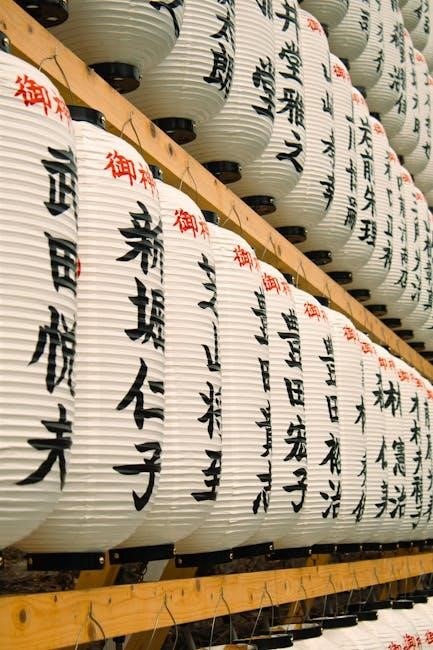
Common Mistakes to Avoid When Learning Kanji
Common errors include neglecting stroke order‚ confusing similar Kanji‚ and ignoring context‚ which are crucial for accurate reading and writing in Japanese.
Misunderstanding Stroke Order
Misunderstanding stroke order is a common pitfall for learners‚ as incorrect strokes can lead to improperly written Kanji. This mistake often stems from a lack of attention to the prescribed order of strokes‚ which can result in characters being illegible or incorrect. Many students overlook the importance of stroke order‚ assuming it doesn’t affect the meaning. However‚ incorrect strokes can alter the appearance of Kanji‚ making them unrecognizable or even change their meaning entirely. To avoid this‚ learners should practice writing Kanji with the correct stroke order from the beginning‚ using worksheets or digital tools to guide them.
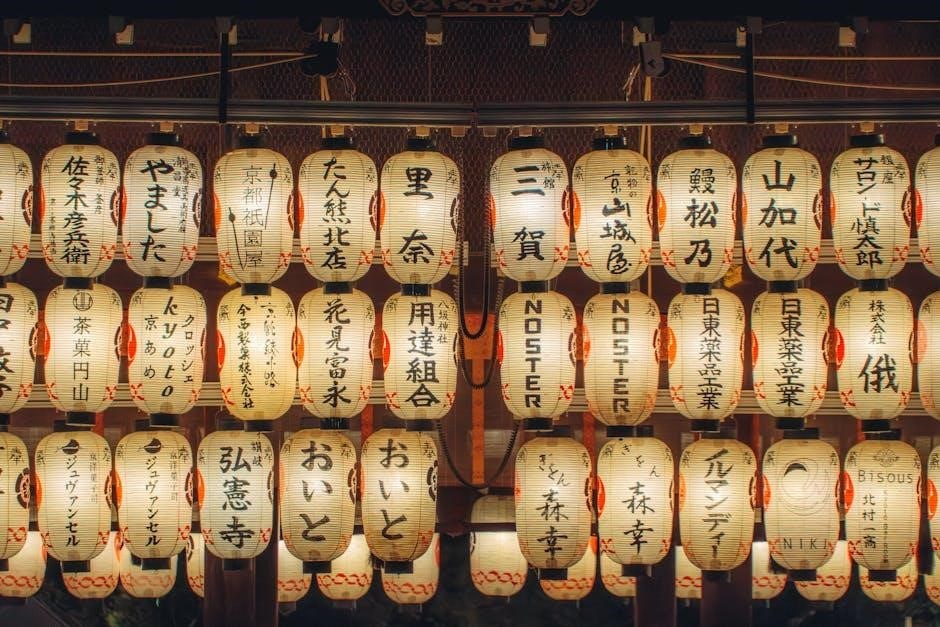
Confusing Similar-Looking Kanji
One common challenge in learning Kanji is distinguishing between characters that appear very similar. These lookalikes often differ by slight variations in strokes or components‚ making them easy to confuse. For example‚ the Kanji for “wood” and “forest” are nearly identical but differ in meaning. Learners must pay close attention to minor details‚ such as the number of strokes or the presence of specific radicals. Mixing up these characters can lead to misunderstandings in both reading and writing. Practicing with flashcards or writing exercises can help improve recognition and reduce confusion.
Overlooking the Importance of Context
One common mistake is neglecting the role of context in Kanji understanding. Kanji often have multiple meanings‚ and their interpretation depends on the surrounding words. Ignoring context can lead to misinterpretation‚ as the same character may signify different things in varying situations. For example‚ the Kanji (ame) means “rain‚” but in compounds like (namida)‚ it refers to “tears.” Relying solely on rote memorization without considering context can hinder effective communication. Learning Kanji in sentences rather than isolation helps develop a practical understanding of their true meanings and usage in real-life scenarios.
The Role of Context in Kanji Understanding
Context is crucial for accurately interpreting Kanji‚ as it helps disambiguate meanings and provides clarity‚ essential for effective communication and understanding in Japanese texts and conversations.
How Context Affects Kanji Meaning
Kanji characters often have multiple meanings‚ and their interpretation depends heavily on the context in which they appear. A single Kanji can convey different readings and meanings in different compounds or sentences. For example‚ the Kanji (ō) means “king” in isolation but can mean “rule” or “monarchy” when combined with other characters. Contextual understanding is crucial for accurate interpretation‚ as the same Kanji can drastically change its meaning based on surrounding characters or the sentence structure. This complexity highlights the importance of learning Kanji in context rather than in isolation.
- Context determines the correct reading and meaning of Kanji.
- Multiple meanings can exist for a single Kanji.
- Learning Kanji in context improves comprehension and reduces ambiguity.
Learning Kanji in Sentences
Learning Kanji within sentences is a highly effective method‚ as it provides context and helps learners understand how characters are used in real-life scenarios. By seeing Kanji in action‚ learners can better grasp their meanings‚ pronunciations‚ and usage. This approach also enhances retention‚ as associating Kanji with specific words or phrases makes them easier to remember. Additionally‚ learning Kanji in sentences fosters an understanding of grammar and vocabulary simultaneously‚ creating a more holistic learning experience. Many resources‚ such as the “2000 Most Common Japanese Kanji PDF‚” include example sentences to facilitate this method‚ making it practical and engaging for learners of all levels.
The Difference Between On-yomi and Kun-yomi
On-yomi and Kun-yomi are the two primary readings of Kanji‚ reflecting their Chinese and Japanese origins. On-yomi‚ or “Chinese readings‚” are derived from Chinese pronunciations‚ often used in compound words and modern terminology. Kun-yomi‚ or “Japanese readings‚” are native to Japan‚ based on the character’s meaning in Japanese context. For example‚ the Kanji for “moon” has an On-yomi “getsu” and a Kun-yomi “tsuki.” Understanding both readings is crucial for accurate pronunciation and context-based usage‚ as the same Kanji can have multiple readings depending on the situation.
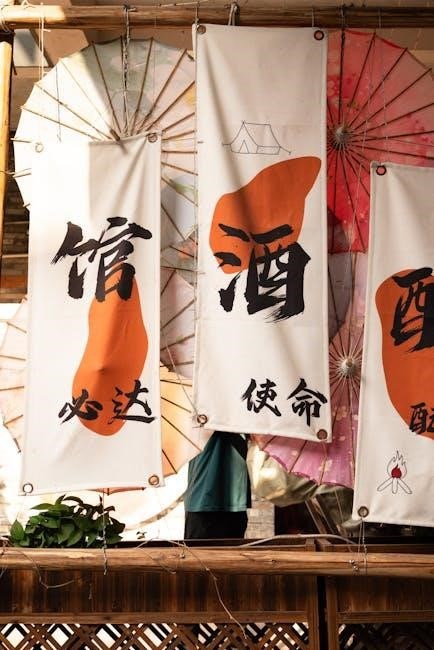
The History and Evolution of Kanji
Kanji originated in China over 3‚000 years ago‚ evolving from pictographs to complex characters. Adopted in Japan‚ they adapted to the language‚ simplifying over centuries into essential symbols.
Origins of Kanji in China
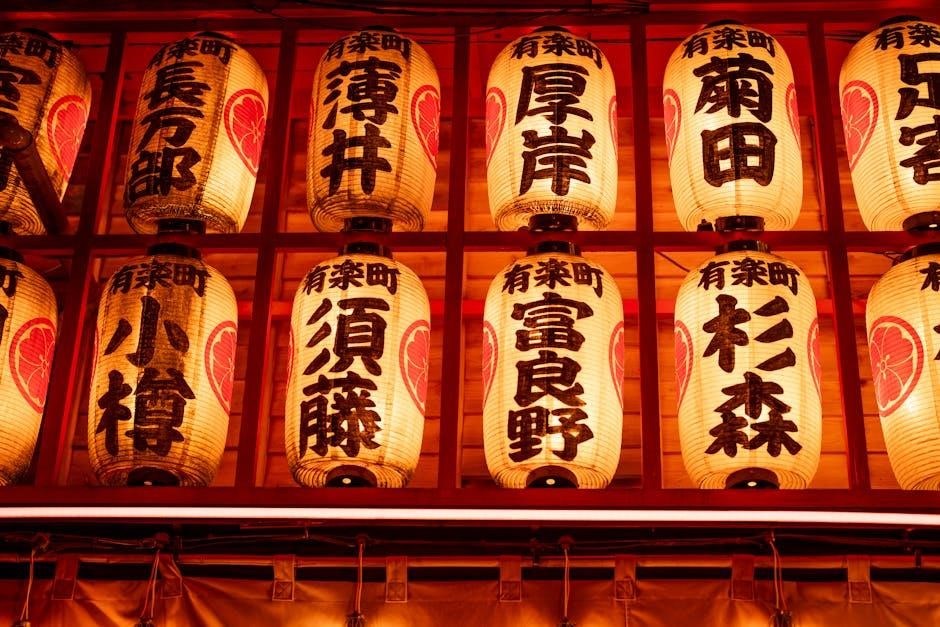
Kanji originated in China over 3‚000 years ago‚ created for divination and record-keeping during the Shang Dynasty. Initially called jiaguwen (oracle bone script)‚ these early characters evolved into more complex forms like jinwen (bronze script) and later lishu (clerical script). Over centuries‚ Kanji became stylized and simplified‚ leading to kaishu (regular script)‚ the most common style today. Influenced by artistic and political changes‚ Kanji spread to neighboring regions‚ including Japan‚ where they adapted to form a cornerstone of the Japanese writing system.
Adaptation of Kanji in Japan
The adaptation of Kanji in Japan involved significant modifications to Chinese characters to suit the Japanese language. Over centuries‚ many characters were simplified or altered in meaning to fit linguistic needs. The Japanese developed Kokuji‚ unique Kanji created to represent native Japanese words. Additionally‚ the meanings of some characters were adapted to align with Japanese culture and pronunciation. This process allowed Kanji to become an integral part of the Japanese writing system‚ blending Chinese origins with Japanese innovation. Today‚ these adapted characters remain central to Japanese communication and cultural expression.
Modern Usage and Simplification
In modern times‚ Kanji usage has evolved to balance tradition with practicality. Many complex characters have been simplified‚ reducing the number of strokes while retaining their meaning. This simplification‚ known as Shinjitai‚ makes Kanji more accessible for learners and everyday use. Additionally‚ digital tools and apps have streamlined the study of Kanji‚ offering interactive and efficient methods for memorization. Despite these changes‚ the core cultural and historical significance of Kanji remains intact‚ ensuring their continued relevance in Japanese communication.
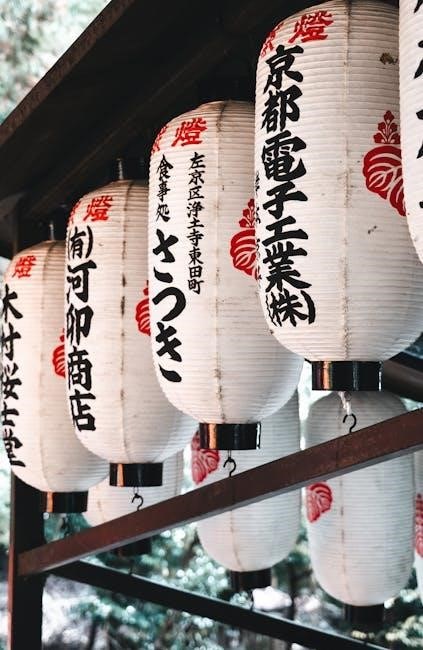
The Practical Application of Kanji Knowledge
Mastering the 2000 most common Kanji enables effective reading‚ writing‚ and communication in Japanese‚ enhancing everyday tasks and cultural engagement through accurate character recognition and usage.
Reading and Writing in Japanese
Mastery of the 2000 most common Kanji is crucial for reading and writing in Japanese. These characters are fundamental to constructing sentences‚ conveying meaning‚ and expressing ideas clearly. Without them‚ even basic communication becomes challenging. Knowing these Kanji enables learners to read newspapers‚ signs‚ and literature with ease. Writing in Japanese also becomes more precise and effective‚ as Kanji provide clarity and context that hiragana and katakana alone cannot offer. This proficiency is essential for advancing language skills and engaging fully with Japanese culture and media.
Enhancing Vocabulary Acquisition
Learning the 2000 most common Japanese Kanji significantly enhances vocabulary acquisition by providing the building blocks for understanding compound words. Many Japanese words are combinations of two or more Kanji‚ and recognizing these characters allows learners to decipher meanings more effectively. This skill reduces reliance on rote memorization and enables learners to expand their vocabulary more efficiently. Additionally‚ knowing Kanji helps in identifying word components‚ making it easier to learn and retain new terms. This foundational knowledge also broadens exposure to various texts‚ further accelerating vocabulary growth and overall language proficiency.
Improving Comprehension of Japanese Media
Mastering the 2000 most common Kanji significantly enhances your ability to understand Japanese media‚ such as newspapers‚ manga‚ and TV shows. Recognizing these characters allows you to follow plotlines‚ grasp nuances‚ and fully engage with content. Without Kanji knowledge‚ media can feel confusing or inaccessible‚ but with it‚ you can enjoy Japanese entertainment and news with clarity. This skill also reduces reliance on subtitles or translations‚ making media consumption more immersive and authentic. Additionally‚ understanding Kanji in context helps you appreciate cultural references and subtle humor‚ deepening your connection to Japanese culture and storytelling.
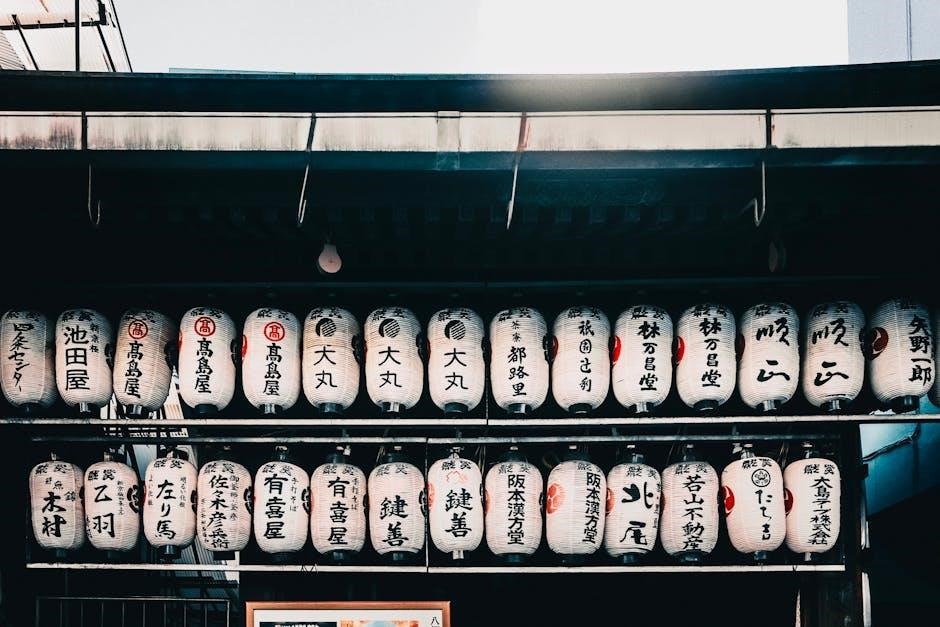
The Benefits of Mastering the 2000 Most Common Kanji
Mastering the 2000 most common Kanji enhances language fluency‚ improves cognitive skills‚ and deepens cultural understanding‚ making it invaluable for both learners and professionals.
Enhanced Language Fluency
Mastering the 2000 most common Japanese Kanji significantly enhances language fluency by enabling learners to recognize and understand a vast majority of written Japanese texts. This proficiency allows for smoother reading and comprehension‚ as well as more natural communication in both writing and speaking. Fluency is further boosted by the ability to recall Kanji quickly‚ reducing cognitive load and enabling focus on the overall message. Additionally‚ knowing these Kanji facilitates accurate writing and comprehension of context-dependent meanings‚ making learners more confident and effective in using Japanese for practical purposes.
Improved Cognitive Skills
Learning the 2000 most common Japanese Kanji enhances cognitive abilities by strengthening memory‚ focus‚ and problem-solving skills. The process of memorizing complex characters improves visual recognition and retention. It also boosts analytical thinking‚ as understanding kanji requires breaking down components and meanings. Regular practice sharpens concentration and mental discipline‚ while the repetitive nature of study reinforces neural pathways. Additionally‚ mastering kanji fosters adaptability and resilience‚ as learners navigate the challenges of a new writing system. These cognitive improvements extend beyond language learning‚ benefiting overall mental agility and intellectual growth.
- Enhances memory and retention
- Sharpens focus and concentration
- Boosts analytical and problem-solving skills
- Fosters mental adaptability and resilience
Deeper Cultural Understanding
Mastering the 2000 most common Japanese Kanji provides a gateway to understanding Japan’s rich cultural heritage. Kanji often carry historical and philosophical meanings‚ reflecting Japanese values and traditions. By learning these characters‚ you gain insight into the country’s literature‚ art‚ and daily life. Many kanji are rooted in stories or concepts that highlight cultural nuances‚ making them a bridge to Japan’s past and present. This knowledge enhances your appreciation for Japanese customs‚ idioms‚ and even conversational expressions‚ fostering a deeper connection to the culture and its people;
Mastering the 2000 most common Japanese Kanji is a cornerstone of Japanese fluency‚ unlocking reading‚ writing‚ and cultural understanding while fostering lifelong language growth and appreciation.
Recap of Key Points
Mastering the 2000 most common Japanese Kanji is crucial for achieving fluency in reading‚ writing‚ and communication. These characters are frequently used in daily life‚ making them essential for comprehension. By focusing on high-frequency Kanji‚ learners can build a strong foundation for understanding Japanese texts. Utilizing resources like the “2000 Most Common Japanese Kanji PDF” provides a structured approach to studying these characters. Incorporating mnemonics‚ consistent practice‚ and contextual learning enhances retention and application. Understanding radicals‚ stroke order‚ and components further aids in recognizing and memorizing Kanji. This systematic approach ensures long-term mastery and cultural insight.
Encouragement for Continued Study
Embrace the journey of mastering the 2000 most common Japanese Kanji as a rewarding path to fluency. Celebrate small victories‚ like recognizing a character in a sentence or using it correctly in writing. Each Kanji learned brings you closer to understanding Japanese culture and literature. Stay consistent‚ as perseverance is key to long-term retention. Remember‚ every character studied is a step toward deeper comprehension and connection with the language. Keep pushing forward‚ and enjoy the process of unlocking the beauty of Japanese communication!
Final Thoughts on the Importance of Kanji
Kanji is the backbone of Japanese communication‚ offering a window into the language’s rich history and cultural depth. While challenging‚ mastering the 2000 most common Kanji is incredibly rewarding. It not only enhances your ability to read and write but also deepens your understanding of Japanese culture and thought processes. Each Kanji carries unique meanings and stories‚ making the learning journey fascinating. Dedication and consistent practice will unlock the doors to fluency and a profound connection with Japanese heritage; Embrace the journey‚ and let Kanji become your key to mastering the Japanese language.